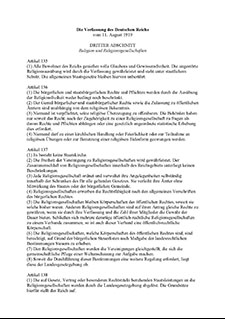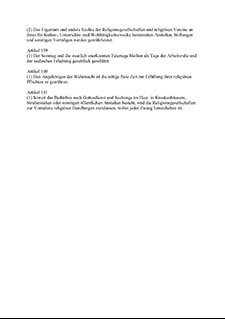The Protestant Church in the Weimar Republic
The Protestant churches were never able to entirely get past the close alliance of throne and altar. Although they had received privileged status in the Weimar Constitution of 1919, they continued to fear threats, which had arisen during the Revolution in the face of hostile advances against the church and Christianity. The Weimar state’s ideological neutrality was interpreted as a degradation of the Christian faith.
The church governments nonetheless adapted pragmatically to the new circumstances. They cooperated with the democratic state on practical issues but also embarked on a collision course time and again in points of principle, especially social democracy.
The end of the monarchist church government and the constitutional separation of church and state were not really taken advantage of within the church as an opportunity to reform the ecclesiastical structure to be more parish-based.
The exigencies of practical coordination, resulting from the centralism reinforced by the Weimar Constitution, took far greater hold than the constitutional idea of a democratic people’s church. They led to the establishment of the German Evangelical Church Federation in 1922. Its political stance was however dictated entirely by the regional churches’ conservatism. As of 1925, a religious “pragmatic republican”, the jurist Hermann Kapler, headed the Church Federation and the Evangelical Church of the Old Prussian Union.
Source / title
- Reichsgesetzblatt 1919, p. 1383.



